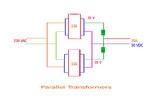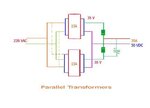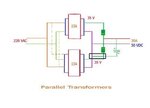roexile
Junior Member level 1
Have a nice day everyone,
If I'm going to connect primary and secondary windings of two 15A-Transformers in parallel, will I get 30A in all ?
Thank you:smile:
If I'm going to connect primary and secondary windings of two 15A-Transformers in parallel, will I get 30A in all ?
Thank you:smile:


